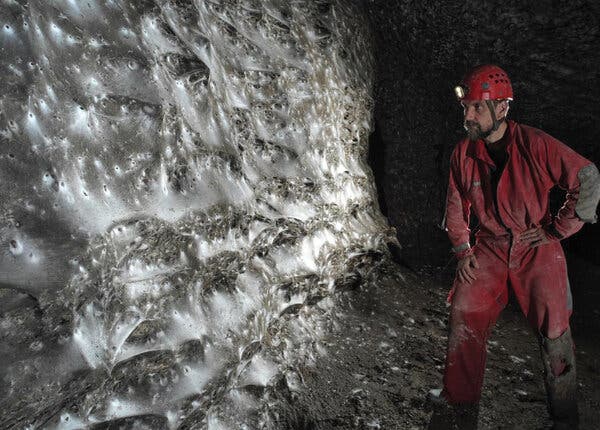Scientists Discover Giant Spider Web Housing Unlikely Residents

In a remarkable discovery, researchers have identified what may be the world’s largest spider web, spanning approximately 1,140 square feet in the Sulfur Cave, located along the border between Albania and Greece. This enormous web, which resembles the size of a small home, is situated in a narrow passage within a cave system formed by the Sarantaporos River.
The team, consisting of biologists, zoologists, and ecologists, was not only taken aback by the sheer size of the web but also by the surprising coexistence of two spider species within it. The web is home to about 111,000 spiders, including 69,000 Tegenaria domestica, commonly known as barn funnel weavers, and approximately 42,000 Prinerigone vagans, a species typically found in damp environments.
Unlikely Coexistence in Darkness
The discovery raises intriguing questions about the interaction between these two spider species. Under normal circumstances, barn funnel weavers are known to prey on the smaller P. vagans. However, the unique conditions within the Sulfur Cave appear to have altered their behavior. According to Blerina Vrenozi, a biologist at the University of Tirana, the absence of light in the cave may be a significant factor.
“In the cave, because it’s dark in there, our hypothesis was that they do not see each other, so they do not attack,” Vrenozi explained. This unexpected finding suggests that environmental factors can drastically change the dynamics of predator-prey relationships.
The cave itself is a network of rooms and passages, carved from limestone over time. Its isolation and unique ecological conditions have allowed these two species to thrive together, despite their typical antagonistic relationship.
Implications for Ecological Research
This discovery not only showcases the remarkable adaptability of spiders but also highlights the importance of studying unique ecosystems. The Sulfur Cave presents an opportunity for scientists to further explore the interactions within this hidden world. As Vrenozi noted, understanding these dynamics could provide insights into how species adapt to their environments, particularly in extreme conditions.
The ongoing research in Sulfur Cave may open doors to new ecological theories and contribute to the broader understanding of biodiversity. As scientists continue to explore the cave, they hope to uncover more secrets about the spiders and their unusual habitat.
The findings emphasize the significance of conservation efforts for such unique ecosystems, which are often overlooked yet hold critical information about the resilience of life in challenging environments.






